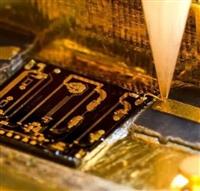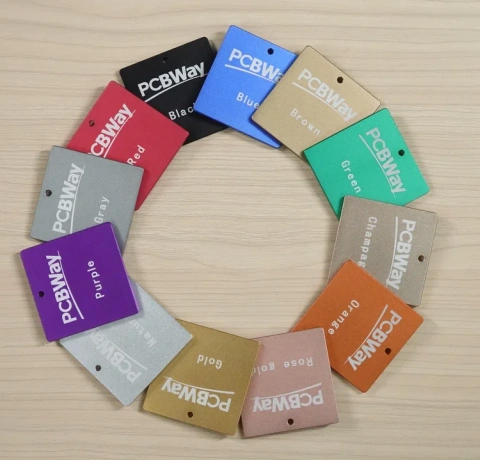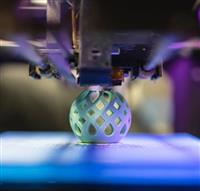What is EMI(Electro-Magnetic Interference)?
EMI (Electro-Magnetic Interference) refers to the interference that can affect circuits on printed circuit boards through electromagnetic induction, electrostatic coupling, or conduction. This interference can degrade the performance of PCB components, cause data corruption, or even render them unable to function properly.
Why is EMI shielding film needed in FPCs and rigid-flex PCBs?
Shielding in EMI electronic devices and equipment involves the use of manufacturing techniques and materials to protect signals from external electromagnetic interference and to prevent generated signals from interfering with surrounding components. Essentially, the purpose of electromagnetic interference shielding is to prevent these signals from entering or leaving a part of the component or product.
Shielding can use different materials depending on the application but must possess conductivity and grounding characteristics. When your flexible PCB or rigid-flex PCB application requires limiting electromagnetic or electrostatic interference, EMI shielding should be applied. The shielding will vary based on the number of EMI interfaces in the product, conductivity requirements, and the amount of bending the circuit will endure. With the increasing prevalence of wireless communication networks such as mobile phones, headphones, and wireless printers, EMI is increasingly coming from many different sources, even external interference to electronic devices, equipment, and systems. Therefore, the use of EMI shielding should be considered when necessary.

What are the EMI shielding methods for FPCs?
EMI shielding aims to absorb radio and other EMI waves. Nowadays, EMI is becoming more of an issue, so how do you choose the best EMI shielding method? EMI shielding methods in FPCs can include copper plating, conductive silver ink printing, and EMI shielding film bonding.
Copper Plating: Copper plating is a traditional shielding method commonly used in the past for manufacturing FPCs. However, copper is not ideal for applications requiring high flexibility, as it tends to crack during circuit bending or folding, or develop burrs during die-cutting. Thin cross-hatched copper layers would be a good choice for multilayer flexible PCBs.
Conductive Silver Ink: Silver ink is a good EMI shielding method. Modern metallic silver ink and coating techniques ensure the cleanliness and proper functioning of chips on high-frequency boards and their ultra-high-speed data transmission. Conductive silver ink is sometimes used in flexible PCB designs, but it is the most expensive of these four methods and has the longest processing time.
Metal Enclosures: Metal enclosures are a classic EMI shielding method mainly used for rigid PCBs and rarely for flexible circuits. In FPCs, it seems outdated as it doesn't meet the requirements for miniaturization. As electronic products become smaller, metal enclosures are ineffective on such a tiny scale. Additionally, if a metal enclosure is used, specific areas of the FPC will lose their flexibility.
EMI Shielding Film: EMI shielding film is becoming increasingly popular in the design of flexible PCBs and rigid-flex boards. With EMI shielding film design, flexible PCBs have optimal flexibility and the thinnest overall thickness. Compared to silver ink printing and copper layer designs, the cost of flexible PCBs will be lower, while the shielding capability will be slightly higher. EMI shielding film offers various advantages in shielding performance, flexibility, cost, and processing cycle. It enhances the shielding performance of transmitting high-frequency signals and high flexibility, preventing the circuit from breaking during bending and can replace copper layer designs, thus saving costs without compromising the board's flexibility."
Applications of EMI Shielding Film in Flexible and Rigid-Flex PCB Design
In order to control EMI, designers often incorporate EMI shielding films into some flexible circuit applications. Many electronic devices utilizing flexible circuits and rigid-flex PCBs are sensitive to absorbing or emitting EMI. Failure to control EMI could potentially have adverse effects on the performance of the design and, in extreme cases, completely hinder its normal operation. Below are some applications featuring EMI shielding films:
1. Mobile Phones and Smartphones: In the design of mobile phones and smartphones, EMI shielding films are often used to cover circuit boards, protecting internal electronic components from external electromagnetic interference, ensuring stable device performance, and wireless communication quality.
2. Tablets and Laptops: Motherboards and other electronic components in tablets and laptops are also often shielded using EMI shielding films to ensure that the devices are not affected by external electromagnetic interference during use, thereby improving device reliability and performance.
3. Automotive Electronic Systems: In automotive electronic systems, EMI shielding films can be used to cover onboard electronic control units (ECUs), navigation systems, wireless communication modules, etc., to reduce electromagnetic interference inside and outside the vehicle and ensure the normal operation of vehicle electronic devices.
4. Medical Devices: Medical devices such as pacemakers, medical monitoring instruments, etc., are very sensitive to electromagnetic interference. Therefore, EMI shielding films are often used to protect internal circuits, ensuring the stable operation of the equipment and the accuracy of medical data.
5. Industrial Control Systems: Devices such as PLCs (Programmable Logic Controllers) in industrial control systems often require EMI shielding films to protect internal circuits, prevent external electromagnetic interference from affecting industrial production processes, and ensure device stability.
If you are familiar with PCB and assembly manufacturing, you will always see a black film adhered to the flexible boards and flex-rigid printed circuit boards, which is the EMI shielding film.
The Commonly Used EMI Shielding Films at PCBWay
On the pricing page of PCBWay, there are two options for EMI shielding films to choose from, as indicated by the red boxes in the image below:

The following diagram depicts one of the shielding films, the product structure of HCF-6000G.

HCF-6000G Datasheet Download
PC800 Datasheet Download
How to bond EMI shielding film?
1. Cut the EMI film according to size requirements.
2. Remove the protective layer from the bottom of the EMI film.
3. Stack the EMI film in the correct position on the flexible circuit board.
4. Laminate them together under heat and pressure.
The conductive adhesive flows and connects the metal deposition layer to the copper circuit on the PCB, forming an electrical connection to the ground.















